Solar System 10 Things: Dust In The Wind, On Mars & Well Beyond
Solar System 10 Things: Dust in the Wind, on Mars & Well Beyond
To most of us, dust is an annoyance. Something to be cleaned up, washed off or wiped away. But these tiny particles that float about and settle on surfaces play an important role in a variety of processes on Earth and across the solar system. So put away that feather duster for a few moments, as we share with you 10 things to know about dust.

1. "Dust" Doesn't Mean Dirty, it Means Tiny
Not all of what we call "dust" is made of the same stuff. Dust in your home generally consists of things like particles of sand and soil, pollen, dander (dead skin cells), pet hair, furniture fibers and cosmetics. But in space, dust can refer to any sort of fine particles smaller than a grain of sand. Dust is most commonly bits of rock or carbon-rich, soot-like grains, but in the outer solar system, far from the Sun's warmth, it's also common to find tiny grains of ice as well. Galaxies, including our Milky Way, contain giant clouds of fine dust that are light years across – the ingredients for future generations of planetary systems like ours.

2. Some Are Big, Some Are Small (and Big Ones Tend to Fall)
Dust grains come in a range of sizes, which affects their properties. Particles can be extremely tiny, from only a few tens of nanometers (mere billionths of a meter) wide, to nearly a millimeter wide. As you might expect, smaller dust grains are more easily lifted and pushed around, be it by winds or magnetic, electrical and gravitational forces. Even the gentle pressure of sunlight is enough to move smaller dust particles in space. Bigger particles tend to be heavier, and they settle out more easily under the influence of gravity.
For example, on Earth, powerful winds can whip up large amounts of dust into the atmosphere. While the smaller grains can be transported over great distances, the heavier particles generally sink back to the ground near their source. On Saturn's moon Enceladus, jets of icy dust particles spray hundreds of miles up from the surface; the bigger particles are lofted only a few tens of miles (or kilometers) and fall back to the ground, while the finest particles escape the moon's gravity and go into orbit around Saturn to create the planet's E ring.

3. It’s EVERYWHERE
Generally speaking, the space between the planets is pretty empty, but not completely so. Particles cast off by comets and ground up bits of asteroids are found throughout the solar system. Take any volume of space half a mile (1 kilometer) on a side, and you’d average a few micron-sized particles (grains the thickness of a red blood cell).
Dust in the solar system was a lot more abundant in the past. There was a huge amount of it present as the planets began to coalesce out of the disk of material that formed the Sun. In fact, motes of dust gently sticking together were likely some of the earliest seeds of the planet-building process. But where did all that dust come from, originally? Some of it comes from stars like our Sun, which blow off their outer layers in their later years. But lots of it also comes from exploding stars, which blast huge amounts of dust and gas into space when they go boom.

4. From a Certain Point of View
Dust is easier to see from certain viewing angles. Tiny particles scatter light depending on how big their grains are. Larger particles tend to scatter light back in the direction from which it came, while very tiny particles tend to scatter light forward, more or less in the direction it was already going. Because of this property, structures like planetary rings made of the finest dusty particles are best viewed with the Sun illuminating them from behind. For example, Jupiter's rings were only discovered after the Voyager 1 spacecraft passed by the planet, where it could look back and see them backlit by the Sun. You can see the same effect looking through a dusty windshield at sunset; when you face toward the Sun, the dust becomes much more apparent.

5. Dust Storms Are Common on Mars
Local dust storms occur frequently on Mars, and occasionally grow or merge to form regional systems, particularly during the southern spring and summer, when Mars is closest to the Sun. On rare occasions, regional storms produce a dust haze that encircles the planet and obscures surface features beneath. A few of these events may become truly global storms, such as one in 1971 that greeted the first spacecraft to orbit Mars, our Mariner 9. In mid-2018, a global dust storm enshrouded Mars, hiding much of the Red Planet's surface from view and threatening the continued operation of our uber long-lived Opportunity rover. We’ve also seen global dust storms in 1977, 1982, 1994, 2001 and 2007.
Dust storms will likely present challenges for future astronauts on the Red Planet. Although the force of the wind on Mars is not as strong as portrayed in an early scene in the movie "The Martian," dust lofted during storms could affect electronics and health, as well as the availability of solar energy.
6. Dust From the Sahara Goes Global
Earth's largest, hottest desert is connected to its largest tropical rain forest by dust. The Sahara Desert is a near-uninterrupted brown band of sand and scrub across the northern third of Africa. The Amazon rain forest is a dense green mass of humid jungle that covers northeast South America. But after strong winds sweep across the Sahara, a dusty cloud rises in the air, stretches between the continents, and ties together the desert and the jungle.
This trans-continental journey of dust is important because of what is in the dust. Specifically, the dust picked up from the Bodélé Depression in Chad -- an ancient lake bed where minerals composed of dead microorganisms are loaded with phosphorus. Phosphorus is an essential nutrient for plant proteins and growth, which the nutrient-poor Amazon rain forest depends on in order to flourish.

7. Rings and Things
The rings of the giant planets contain a variety of different dusty materials. Jupiter's rings are made of fine rock dust. Saturn's rings are mostly pure water ice, with a sprinkling of other materials. (Side note about Saturn's rings: While most of the particles are boulder-sized, there's also lots of fine dust, and some of the fainter rings are mostly dust with few or no large particles.) Dust in the rings of Uranus and Neptune is made of dark, sooty material, probably rich in carbon.
Over time, dust gets removed from ring systems due to a variety of processes. For example, some of the dust falls into the planet's atmosphere, while some gets swept up by the planets' magnetic fields, and other dust settles onto the surfaces of the moons and other ring particles. Larger particles eventually form new moons or get ground down and mixed with incoming material. This means rings can change a lot over time, so understanding how the tiniest ring particles are being moved about has bearing on the history, origins and future of the rings.

8. Moon Dust is Clingy and Might Make You Sick
So, dust is kind of a thing on the Moon. When the Apollo astronauts visited the Moon, they found that lunar dust quickly coated their spacesuits and was difficult to remove. It was quite abrasive, causing wear on their spacesuit fabrics, seals and faceplates. It also clogged mechanisms like the joints in spacesuit limbs, and interfered with fasteners like zippers and Velcro. The astronauts also noted that it had a distinctive, pungent odor, not unlike gunpowder, and it was an eye and lung irritant.
Many of these properties apparently can be explained by the fact that lunar dust particles are quite rough and jagged. While dust particles on Earth get tumbled and ground by the wind into smoother shapes, this sort of weathering doesn't happen so much on the Moon. The roughness of Moon dust grains makes it very easy for them to cling to surfaces and scratch them up. It also means they're not the sort of thing you would want to inhale, as their jagged edges could damage delicate tissues in the lung.

9. Dust is What Makes Comets So Pretty
Most comets are basically clods of dust, rock and ice. They spend most of their time far from the Sun, out in the refrigerated depths of the outer solar system, where they're peacefully dormant. But when their orbits carry them closer to the Sun -- that is, roughly inside the orbit of Jupiter -- comets wake up. In response to warming temperatures, the ices on and near their surfaces begin to turn into gases, expanding outward and away from the comet, and creating focused jets of material in places. Dust gets carried away by this rapidly expanding gas, creating a fuzzy cloud around the comet's nucleus called a coma. Some of the dust also is drawn out into a long trail -- the comet's tail.

10. We're Not the Only Ones Who're So Dusty
Dust in our solar system is continually replenished by comets whizzing past the Sun and the occasional asteroid collision, and it's always being moved about, thanks to a variety of factors like the gravity of the planets and even the pressure of sunlight. Some of it even gets ejected from our solar system altogether.
With telescopes, we also observe dusty debris disks around many other stars. As in our own system, the dust in such disks should evolve over time, settling on planetary surfaces or being ejected, and this means the dust must be replenished in those star systems as well. So studying the dust in our planetary environs can tell us about other systems, and vice versa. Grains of dust from other planetary systems also pass through our neighborhood -- a few spacecraft have actually captured and analyzed some them -- offering us a tangible way to study material from other stars.
Read the full version of ‘Solar System: 10 Things to Know’ article HERE.
Make sure to follow us on Tumblr for your regular dose of space: http://nasa.tumblr.com.
More Posts from Nasa and Others
Ever get a random craving for a food when in space?
Will normal uv protection sunglasses work?
Unfortunately no. They do not block out enough of the sunlight so you could still burn your eyes if you were to use them to look at the Sun. The ISO 12312-2 compliant eclipse glasses are so dark you literally can’t see anything out of them unless you are looking at the Sun. You can find trusted vendors through the links at https://eclipse2017.nasa.gov/safety If you can’t get them in time, you can also make a pinhole projector https://eclipse.aas.org/eye-safety/projection and watch the eclipse with that.

The Summer Solstice Is Here!
Today — June 20, 2024 — is the northern summer solstice. In the Northern Hemisphere, it marks the longest day of the year and the official start to summer.

We experience changing day lengths throughout the year because Earth rotates on a tilted axis as it goes around the Sun. This means during half of the year the North Pole tilts toward the Sun and in the other half it points away.

Solstices occur twice per year, when Earth’s poles are tilted closest to and farthest from the Sun.

The summer solstice is an important day for cultures around the world, especially at latitudes near the North Pole. Indigenous peoples have long marked the summer solstice with dancing and celebrations. Farmers have relied on the solstice to determine when to plant crops. The solstice’s timing also influenced the development of some calendars, like the ancient Roman calendar and the modern Gregorian calendar.
To mark the beginning of summer, here are four ways you can enjoy the Sun and the many wonders of space this season:

1. Check out the “Strawberry Moon”
June is the month of the Strawberry Moon. This name originates with the Algonquin tribes. June is when strawberries are ready for harvest in the northeastern United States, where the Algonquin people traditionally live. The full Strawberry Moon this year happens tomorrow night — June 21, 2024. Grab a pair of binoculars to see it in detail.
2. Celebrate the Heliophysics Big Year!
During the Heliophysics Big Year, we are challenging you to participate in as many Sun-related activities as you can. This month’s theme is performance art. We’re looking at how various kinds of performance artists are moved by the Sun and its influence on Earth. For example, check out this Sun song!
Find out how to get involved here: https://science.nasa.gov/sun/helio-big-year/.

3. Listen to a space-cast
NASA has a ton of great space podcasts. Take a listen to Curious Universe’s Here Comes the Sun series to learn all about our closest star, from how it causes weather in space, to how you can help study it! For even more podcasts, visit our full list here: https://www.nasa.gov/podcasts.

4. Make sunspot cookies
The Sun sometimes has dark patches called sunspots. You can make your own sunspots with our favorite cookie recipe. Real sunspots aren’t made of chocolate, but on these sunspot cookies they are. And they're delicious.
Make sure to follow us on Tumblr for your regular dose of space!
What Did Astronaut Scott Kelly Do After a #YearInSpace?
Astronaut Scott Kelly just returned from his One-Year Mission aboard the International Space Station. After spending 340 days on orbit, you can imagine that he started to miss a few Earthly activities. Here are a few things he did after his return home:
Watched a Sunset

While on the International Space Station for his One-Year Mission, astronaut Scott Kelly saw 16 sunrises/sunsets each day...so he definitely didn’t miss out on the beauty. That said, watching a sunset while on Earth is something that he had to wait to see. Tweet available HERE.
Ate Fresh Food

After spending a year on the International Space Station, eating precooked food, anyone would be excited to dig into a REAL salad. Astronaut Scott Kelly was no exception, and posted about his first salad on Earth after his one-year mission. Learn more about what astronauts eat while in space HERE. Tweet available HERE.
Jumped into a Pool

Water is a precious resource in space. Unfortunately, that means that there isn’t a pool on the space station. Luckily, astronaut Scott Kelly was able to jump into some water after his return to Earth. Tweet/video available HERE.
Sat at a Dinner Table

While living on the International Space Station, crew members regularly enjoy their meals together, but do so while floating in microgravity. The comfort of pulling up a chair to the dinner table is something they can only experience once they’re back home on Earth. Tweet available HERE.
Enjoyed the Weather

When crew members live on the space station they can’t just step outside for a stroll. The only time they go outside the orbiting laboratory is during a spacewalk. Even then, they are confined inside a bulky spacesuit. Experiencing the cool breeze or drops of rain are Earthly luxuries. Tweet available HERE.
Stopped by the Doctor’s Office

The One-Year Mission doesn’t stop now that astronaut Scott Kelly is back on Earth. Follow-up exams and tests will help scientists understand the impacts of microgravity on the human body during long-duration spaceflight. This research will help us on our journey to Mars. Tweet available HERE.
Visited the Denist

When you spend a year in space, you’ll probably need to catch up on certain things when you return to Earth. Astronaut Scott Kelly made sure to include a visit to the dentist on his “return home checklist”. Tweet available HERE.
Make sure to follow us on Tumblr for your regular dose of space: http://nasa.tumblr.com
Fun Facts About Mars

Mars is a cold desert world, and is the fourth planet from the sun. It is half the diameter of Earth and has the same amount of dry land. Like Earth, Mars has seasons, polar ice caps, volcanoes, canyons and weather, but its atmosphere is too thin for liquid water to exist for long on the surface. There are signs of ancient floods on the Red Planet, but evidence for water now exists mainly in icy soil and thin clouds.

Earth has one, Mars has two…moons of course! Phobos (fear) and Deimos (panic) are the Red Planet’s two small moons. They are named after the horses that pulled the chariot of the Greek war god Ares, the counterpart to the Roman war god Mars.

The diameter of Mars is 4220 miles (6792 km). That means that the Red Planet is twice as big as the moon, but the Earth is twice as big as Mars.

Since Mars has less gravity than Earth, you would weigh 62% less than you do here on our home planet. Weigh yourself here on the Planets App. What’s the heaviest thing you’ve ever lifted? On Mars, you could have lifted more than twice that! Every 10 pounds on Earth only equals 4 pounds on the Red Planet. Find out why HERE.

Mass is the measurement of the amount of matter something contains. Mars is about 1/10th of the mass of Earth.

Mars and Earth are at their closest point to each other about every two years, with a distance of about 33 million miles between them at that time. The farthest that the Earth and Mars can be apart is: 249 million miles. This is due to the fact that both Mars and Earth have elliptical orbits and Mars’ orbit is tilted in comparison with the Earth’s. They also orbit the sun at different rates.

The temperature on Mars can be as high as 70 degrees Fahrenheit (20 degrees Celsius) or as low as about –225 degrees Fahrenheit (-153 degrees Celsius). How hot or cold the surface varies between day and night and among seasons. Mars is colder than Earth because it is farther from the sun.

You know that onions have layers, but did you know that Mars has layers too? Like Earth, Mars has a crust, a mantle and a core. The same stuff even makes up the planet layers: iron and silicate.

Ever wonder why it’s so hard launching things to space? It’s because the Earth has a log of gravity! Gravity makes things have weight, and the greater the gravity, the more it weights. On Mars, things weigh less because the gravity isn’t as strong.

Take a deep breath. What do you think you just breathed in? Mostly Nitrogen, about a fifth of that breath was Oxygen and the rest was a mix of other gases. To get the same amount of oxygen from one Earth breath, you’d have to take around 14,500 breaths on Mars! With the atmosphere being 100 times less dense, and being mostly carbon dioxide, there’s not a whole lot of oxygen to breathe in.

Mars has about 15% of Earth’s volume. To fill Earth’s volume, it would take over 6 Mars’ volumes.
For more fun Mars facts, visit HERE.
Make sure to follow us on Tumblr for your regular dose of space: http://nasa.tumblr.com
What’s Up For September 2018?
Outstanding views Venus, Jupiter, Saturn and Mars with the naked eye!

You'll have to look quickly after sunset to catch Venus. And through binoculars or a telescope, you'll see Venus's phase change dramatically during September - from nearly half phase to a larger thinner crescent!

Jupiter, Saturn and Mars continue their brilliant appearances this month. Look southwest after sunset.

Use the summer constellations help you trace the Milky Way.

Sagittarius: where stars and some brighter clumps appear as steam from the teapot.

Aquila: where the Eagle's bright Star Altair, combined with Cygnus's Deneb, and Lyra's Vega mark the Summer Triangle.

Cassiopeia, the familiar "w"- shaped constellation completes the constellation trail through the Summer Milky Way. Binoculars will reveal double stars, clusters and nebulae.

Between September 12th and the 20th, watch the Moon pass from near Venus, above Jupiter, to the left of Saturn and finally above Mars!

Both Neptune and brighter Uranus can be spotted with some help from a telescope this month.

Look at about 1:00 a.m. local time or later in the southeastern sky. You can find Mercury just above Earth's eastern horizon shortly before sunrise. Use the Moon as your guide on September 7 and 8th.

And although there are no major meteor showers in September, cometary dust appears in another late summer sight, the morning Zodiacal light. Try looking for it in the east on moonless mornings very close to sunrise. To learn more about the Zodiacal light, watch "What's Up" from March 2018.

Watch the full What’s Up for September Video:
There are so many sights to see in the sky. To stay informed, subscribe to our What’s Up video series on Facebook.
Make sure to follow us on Tumblr for your regular dose of space: http://nasa.tumblr.com
Science Balloons on Parade

You might see some of your favorite characters bobbing through the streets of New York City during Macy's Thanksgiving Day Parade, but did you know that NASA's got some balloons of our own? Early December in Antarctica, we're planning to launch some behemoth balloons carrying science experiments and instruments to help unravel mysteries of our universe.

Like the parade balloons, these scientific balloons are filled with helium. But the science balloon is designed to soar above 130,000 feet, past the clouding views of our atmosphere. They can stay in the air from 2 hours to 100 days, depending on the balloon type and how heavy the science payload is (up to 6000 lbs). A typical, fully-inflated scientific balloon can be 460 ft in diameter and 396 ft in height, made of acres of sandwich bag-looking film. That’s MUCH larger than some parade balloons, and probably a pain to bring down 6th Avenue.
Like the parade balloons, these scientific balloons are filled with helium. But the science balloon is designed to soar above 130,000 feet, past the clouding views of our atmosphere.
So why launch these balloons in Antarctica? Winter in the South Pole means 24 hours of non-stop sunlight, which is great for studying our sun. Being at the poles, which has a weaker magnetic field than the rest of our planet, also means we can capture and study cosmic ray particles that would be too scattered by the Earth’s magnetic field elsewhere. Depending on the kind of science we'd like to do, we also launch balloons from places all over the world.

These balloons are great, inexpensive test-beds for scientific instruments that could one day end up on a space-bound mission. NASA's NuSTAR mission started out as a balloon experiment before it was refined and launched into space to study black holes and other supernova remnants. Learn more about our balloons, and see where these balloons are going using our tracker.
Make sure to follow us on Tumblr for your regular dose of space: http://nasa.tumblr.com
Parade Photo: U.S. Air Force photo/Senior Airman Brian Ferguson
Small Tissue Chips in Space a Big Leap Forward for Research
Tissue chips, thumb-drive sized devices that contain human cells in a 3D matrix, represent a giant leap in science.
They can test cells’ response to:
•stresses
•drugs
•genetic changes

The Tissue Chips in Space initiative seeks to better understand the role of microgravity on human health and disease and to translate that understanding to improved human health on Earth.
This series of investigations to test tissue chips in microgravity aboard the International Space Station is planned through a collaboration between the National Center for Advancing Translational Sciences (NCATS) at the National Institutes for Health (NIH) and the National Laboratory in partnership with NASA.

Many of the changes in the human body caused by microgravity resemble the onset and progression of diseases associated with aging on Earth, but in space, changes occur much faster. Scientists may be able to use tissue chips in space to model changes that take months or years to happen on Earth.
A tissue chip needs three properties, according to Lucie Low, scientific program manager at NCATS. “It has to be 3D,” she explained. “It must have multiple different types of cells, and it must have microfluidic channels. Essentially, you get a functional unit of what human tissues are like, outside of the body,” said Low.

As accurate models of the structure and function of human organs, tissue chips provide a model for predicting whether a drug, vaccine or biologic agent is safe in humans more quickly and effectively than current methods.

This first phase of Tissue Chips in Space includes five investigations. An investigation of immune system aging is planned for launch on the SpaceX CRS-16 flight, scheduled for mid-November. The other four, scheduled to launch on subsequent flights, include lung host defense, the blood-brain barrier, musculoskeletal disease and kidney function. This phase tests the effects of microgravity on the tissue chips and demonstrates the capability of the automated system.
All five investigations make a second flight about 18 months later to confirm use of the model, such as testing potential drugs on the particular organs. Four more projects are scheduled for launch in summer 2020, including two on engineered heart tissue to understand cardiovascular health, one on muscle wasting and another on gut inflammation.
Ultimately, the technology could allow astronauts going into space to take along personalized chips that could be used to monitor changes in their bodies and to test possible countermeasures and therapies. That would be a major leap forward in keeping astronauts healthy on missions to deep space!
Make sure to follow us on Tumblr for your regular dose of space: http://nasa.tumblr.com
How Do Space Telescopes Break Down Light?
Space telescopes like Hubble and our upcoming James Webb Space Telescope use light not only to create images, but can also break light down into individual colors (or wavelengths). Studying light this way can give us a lot of detail about the object that emitted that light. For example, studying the components of the light from exoplanets can tell us about its atmosphere’s color, chemical makeup, and temperature. How does this work?
Remember the primary colors you learned about in elementary school?
Those colors are known as the pigment or subtractive colors. Every other color is some combination of the primary colors: red, yellow, and blue.

Light also has its own primary colors, and they work in a similar way. These colors are known as additive or light colors.
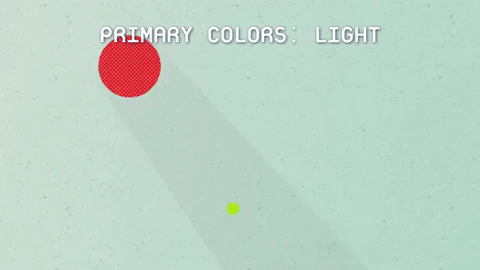
TVs make use of light’s colors to create the pictures we see. Each pixel of a TV screen contains some amount of red, green and blue light. The amount of each light determines the overall color of the pixel. So, each color on the TV comes from a combination of the primary colors of light: red, green and blue.

Space telescope images of celestial objects are also a combination of the colors of light.
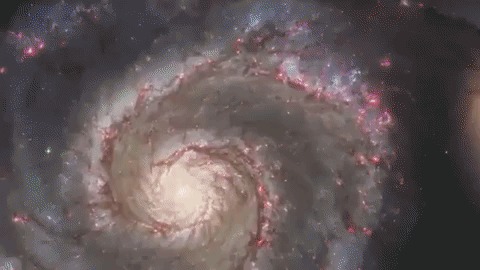
Every pixel that is collected can be broken down into its base colors. To learn even more, astronomers break the red, green and blue light down into even smaller sections called wavelengths.
This breakdown is called a spectrum.
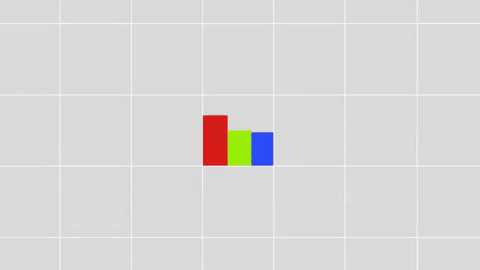
With the right technology, every pixel of light can also be measured as a spectrum.

Images show us the big picture, while a spectrum reveals finer details. Astronomers use spectra to learn things like what molecules are in planet atmospheres and distant galaxies.
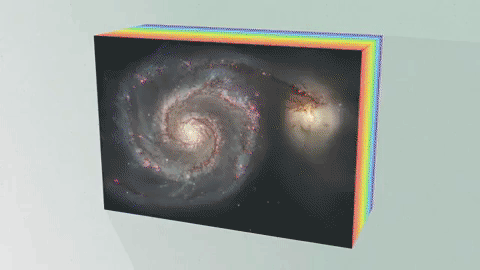
An Integral Field Unit, or IFU, is a special tool on the James Webb Space Telescope that captures images and spectra at the same time.
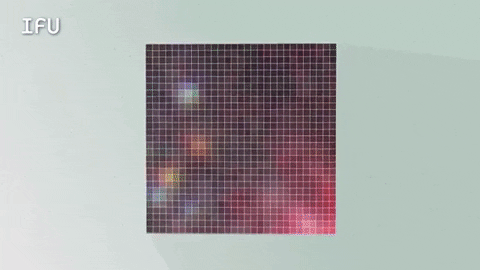
The IFU creates a unique spectrum for each pixel of the image the telescope is capturing, providing scientists with an enormous amount of valuable, detailed data. So, with an IFU we can get an image, many spectra and a better understanding of our universe.
Watch the full video where this method of learning about planetary atmospheres is explained:
The James Webb Space Telescope is our upcoming infrared space observatory, which will launch in 2021. It will spy the first galaxies that formed in the universe and shed light on how galaxies evolve, how stars and planetary systems are born and tell us about potentially habitable planets around other stars.
To learn more about NASA’s James Webb Space Telescope, visit the website, or follow the mission on Facebook, Twitter and Instagram.
Text and graphics credit: Space Telescope Science Institute
Make sure to follow us on Tumblr for your regular dose of space: http://nasa.tumblr.com.
The James Webb Space Telescope: Art + Science Continuing to Inspire

The James Webb Space Telescope – our next infrared space observatory – will not only change what we know, but also how we think about the night sky and our place in the cosmos. This epic mission to travel back in time to look back at the first stars and galaxies has inspired artists from around the world to create art inspired by the mission.

Image Credit: Anri Demchenko
It’s been exactly two years since the opening of the first James Webb Space Telescope Art + Science exhibit at the NASA Goddard Visitor Center. The exhibit was full of pieces created by artists who had the special opportunity to visit Goddard and view the telescope in person in late 2016.

Online Submission Image Credit: Tina Saramaga
Since the success of the event and exhibit, the Webb project has asked its followers to share any art they have created that was inspired by the mission. They have received over 125 submissions and counting!

Image Credit: Enrico Novelli

Online Submission Image Credit: Unni Isaksen
A selection of these submissions will be on display at NASA Goddard’s Visitor Center from now until at least the end of April 2019. The artists represented in this exhibit come not just from around the country, but from around the world, showing how art and science together can bring a love of space down to Earth.

More information about each piece in the exhibit can be found in our web gallery. Want to participate and share your own art? Tag your original art, inspired by the James Webb Space Telescope, on Twitter or Instagram with #JWSTArt, or email us through our website! For more info and rules, see: http://nasa.gov/jwstart.

Webb is the work of hands and minds from across the planet. We’re leading this international project with our partners from the European Space Agency (ESA) and the Canadian Space Agency (CSA), and we’re all looking forward to its launch in 2021. Once in space, Webb will solve mysteries of our solar system, look beyond to distant worlds around other stars, and probe the mysterious structures and origins of our universe and our place in it.
Learn more about the James Webb Space Telescope HERE, or follow the mission on Facebook, Twitter and Instagram.
Make sure to follow us on Tumblr for your regular dose of space: http://nasa.tumblr.com
-
 littlefemaleangel liked this · 3 years ago
littlefemaleangel liked this · 3 years ago -
 ridding-on-the-storm liked this · 3 years ago
ridding-on-the-storm liked this · 3 years ago
Explore the universe and discover our home planet with the official NASA Tumblr account
1K posts